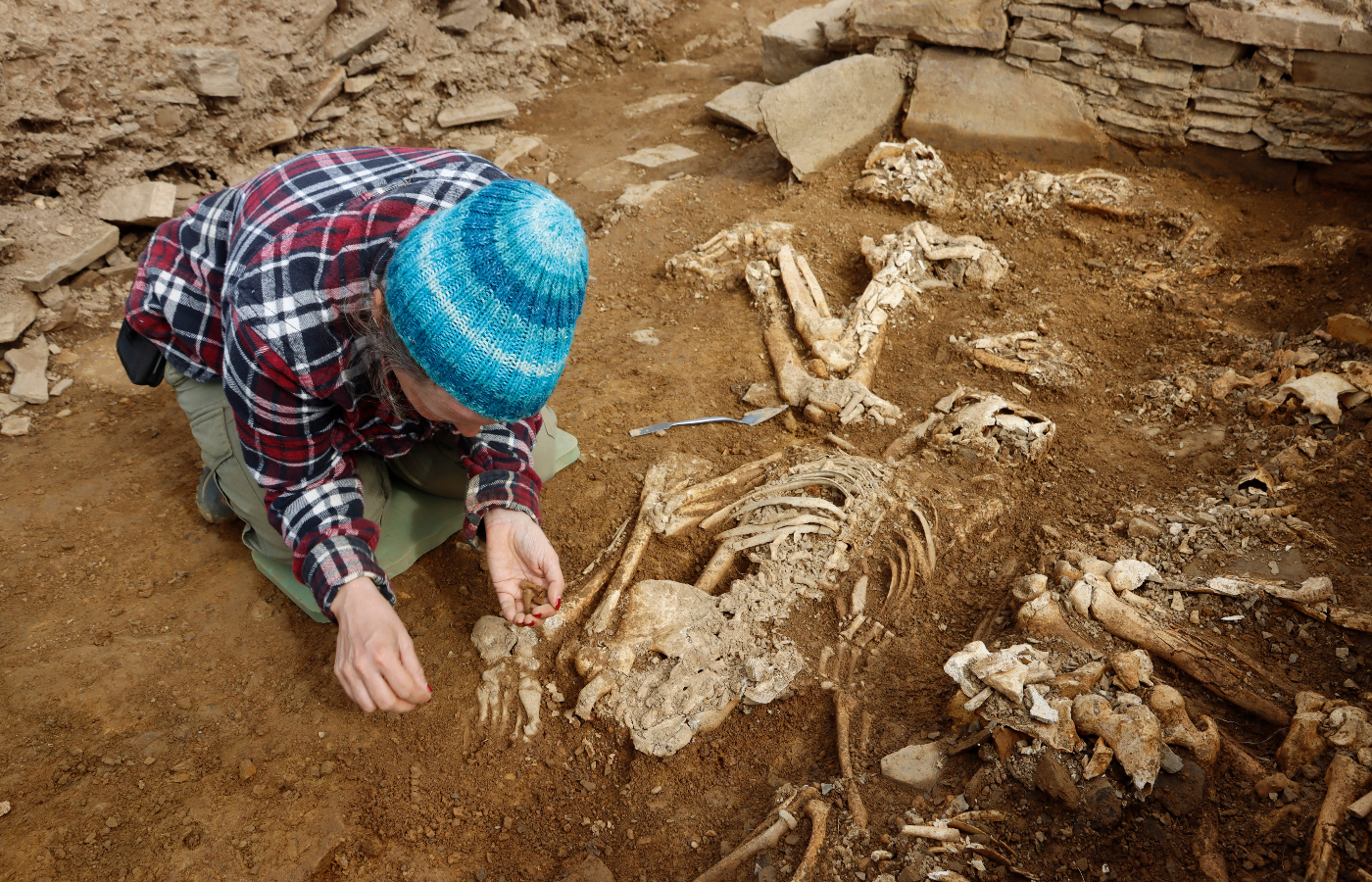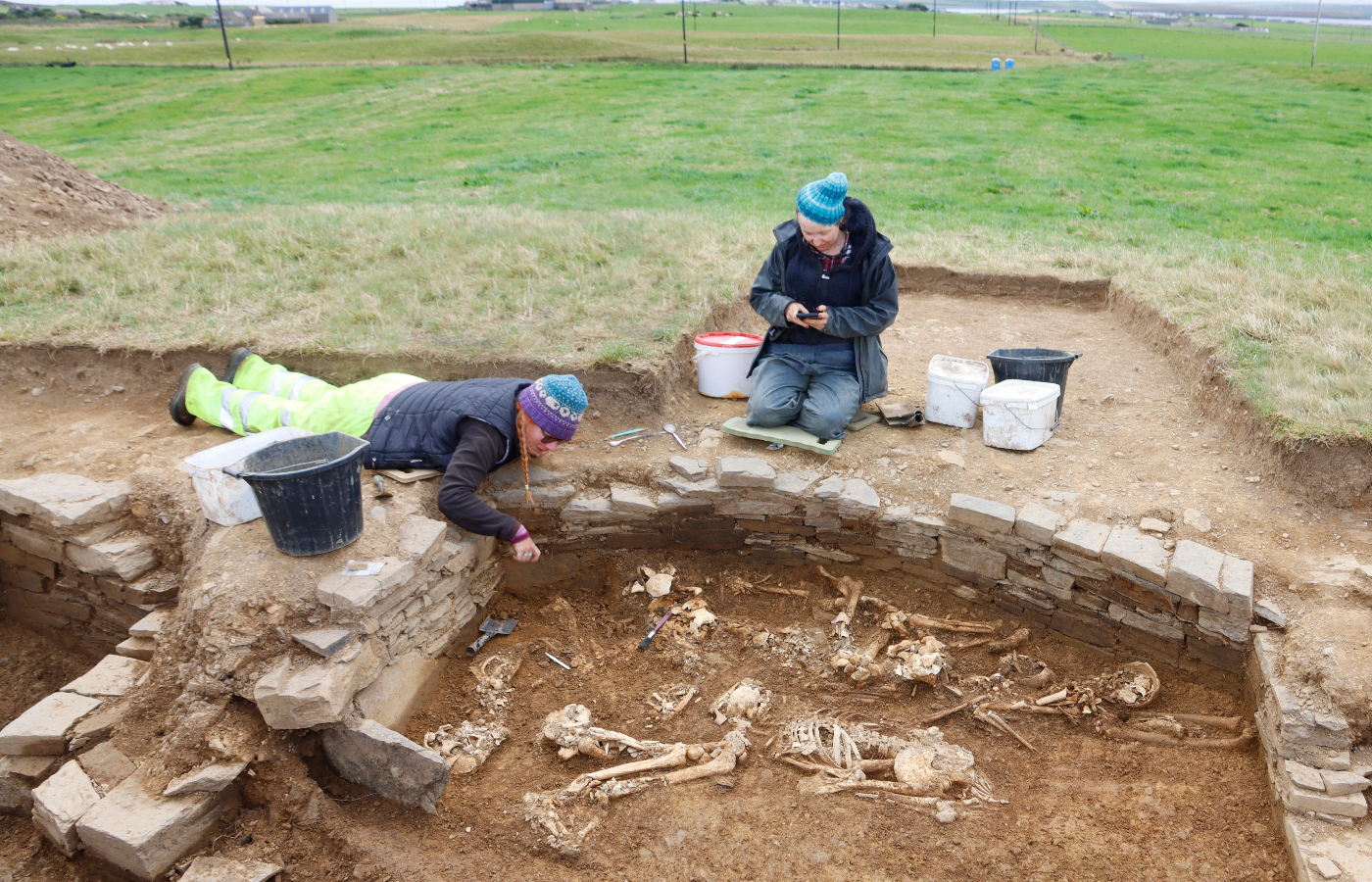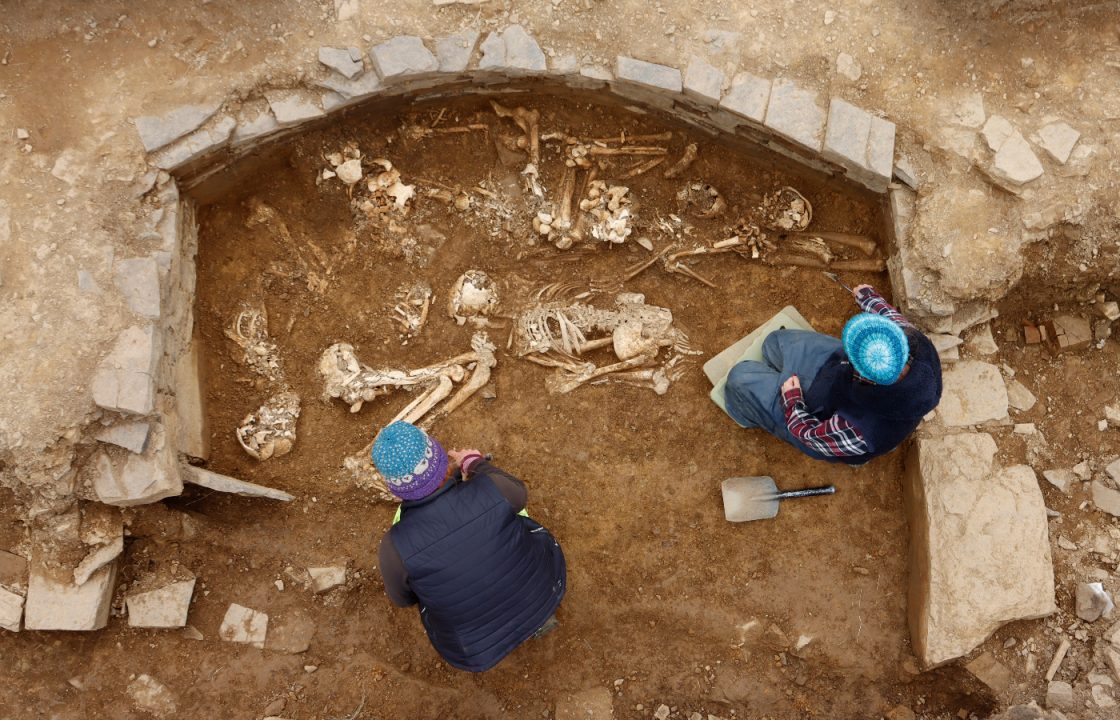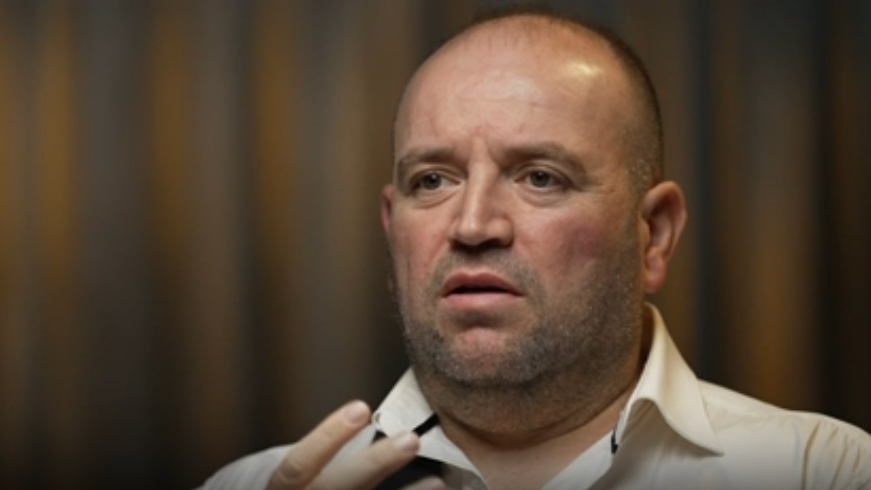Archaeologists have discovered the ruins of an “incredibly rare” 5,000-year old-tomb on Orkney.
The Neolithic burial site was discovered at Holm, East Mainland in Orkney and is believed to have been destroyed in the 19th century.
A three-week excavation, directed by Dr Hugo Anderson-Whymark, National Museums Scotland and Professor Vicki Cummings of Cardiff University uncovered the skeletons of 14 men, women, children alongside further disarticulated remains.
 National Museum of Scotland
National Museum of ScotlandArtefacts, including pottery, stone tools and a bone pin, were recovered from the tomb by students from the University of Central Lancashire and local volunteers.
Dr Anderson-Whymark said: “Orkney is exceptionally rich in archaeology, but we never expected to find a tomb of this size in a such a small-scale excavation.
 National Museum of Scotland
National Museum of Scotland“It’s incredible to think this once impressive monument was nearly lost without record, but fortunately just enough stonework has survived for us to be able understand the size, form and construction of this tomb.”
Professor Cummings echoed his sentiments, adding: “The preservation of so many human remains in one part of the monument is amazing, especially since the stone has been mostly robbed for building material.
“It is incredibly rare to find these tomb deposits, even in well-preserved chambered tombs and these remains will enable new insights into all aspects of these peoples’ lives.”
Follow STV News on WhatsApp
Scan the QR code on your mobile device for all the latest news from around the country





























